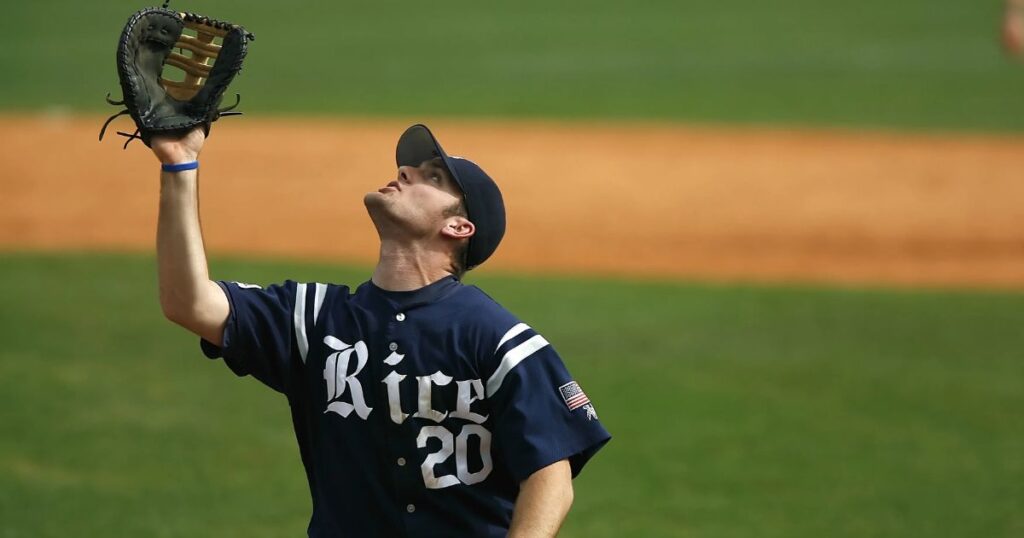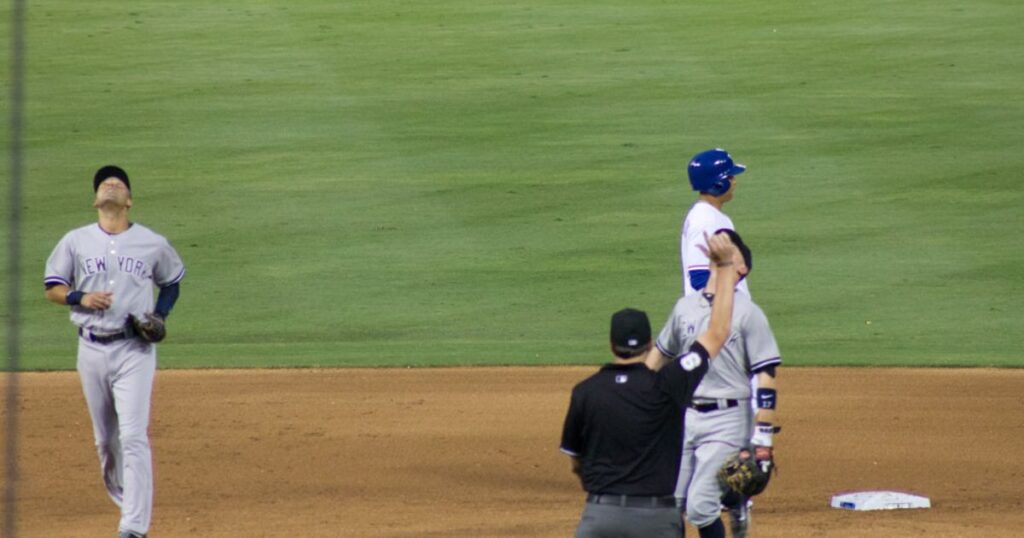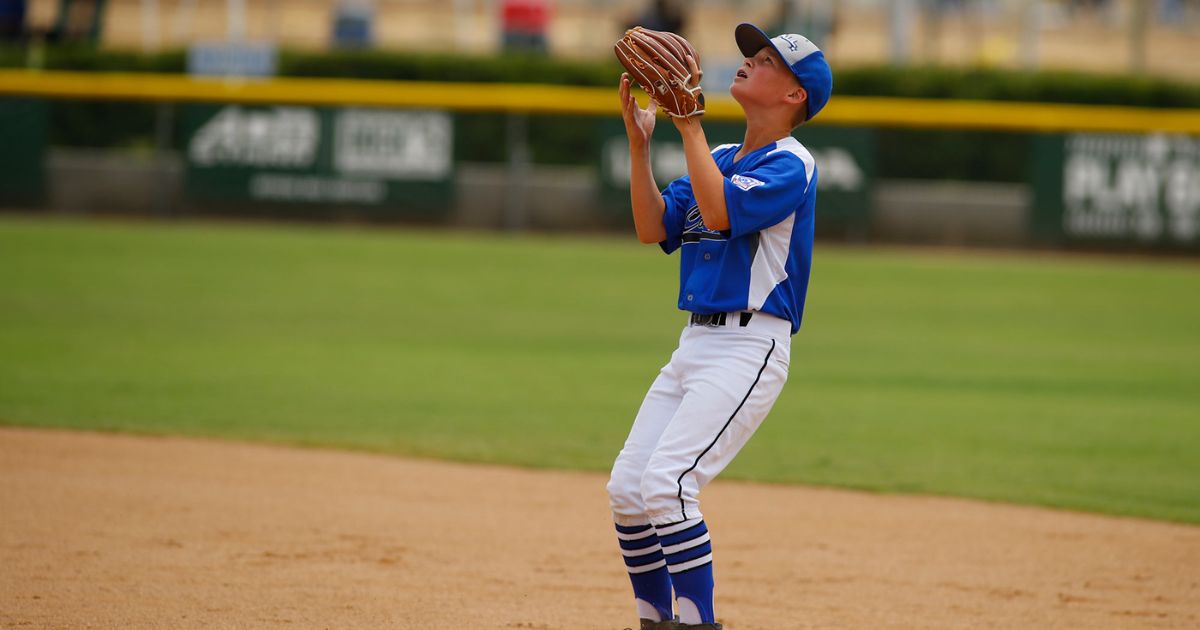The infield fly rule is a strategic regulation in baseball that maintains fairness and prevents defensive teams from exploiting specific situations to gain an undue advantage.
Understanding this rule is crucial for players, coaches, and fans alike, as it directly impacts game strategy, player decisions, and the overall integrity of the sport.
What Is The Infield Fly Rule
The infield fly rule is a rule in baseball that applies when there are fewer than two outs and runners on first and second base or the bases are loaded. If a batter hits a fly ball that an infielder can catch with ordinary effort, the batter is automatically called out.
This prevents the defense from intentionally dropping the ball to get an easy double or triple play.The key aspects of the infield fly rule are: bases must have runners on first and second or bases loaded, there are fewer than two outs, and the umpire deems the fly ball catchable by an infielder without extraordinary effort.
Even if the ball is dropped, the batter is still out. This rule maintains fairness by not allowing the defense to take advantage of easy pop-ups unfairly.
Understanding the Infield Fly Rule

The infield fly rule baseball applies when there are fewer than two outs, and there are runners on first and second base, or the bases are loaded. If a batter hits a fly ball that, in the umpire’s judgment, can be caught by an infielder with ordinary effort, the umpire declares the batter out, regardless of whether the ball is actually caught in flight.
This call is made to prevent the fielding team from intentionally dropping a fly ball to secure an easy double or triple play. Here’s an example to illustrate the rule: Imagine a situation with runners on first and second base, and one out. The batter hits a pop-up in the infield area, and the shortstop has an easy opportunity to catch the ball.
Rule 2.00
The Infield Fly rule says this: If there are runners on first and second base, or first, second, and third base, with less than two outs, and a batter hits a high fly ball that an infielder can easily catch with normal effort (not a line drive or bunt), then the batter is automatically out.
This applies even if the infielder drops the ball on purpose. The ball remains live, so runners can try to advance at their own risk after the ball is touched. If the ball goes foul instead, it’s treated like a normal foul ball.
The key points are:
- Less than two outs
- Runners on first and second, or all three bases
- A high fly ball, not a line drive or bunt
- An infielder can catch it easily
This rule prevents the defense from getting cheap outs by intentionally dropping the ball.
Read More :
The Bonus Foul Rule in Basketball: A Game-Changing Element Explained
Criteria for the Infield Fly Rule
For the infield fly rule to be called, the following criteria must be met:
- Runners on First and Second or Bases Loaded: The rule only applies in these specific base-running situations.
- Fewer Than Two Outs: The rule is designed to prevent double or triple plays that can unfairly deflate an offensive team’s scoring opportunity.
- Ball is Catchable by an Infielder with Ordinary Effort: The umpire’s judgment plays a critical role in determining whether a ball qualifies under the infield fly rule.
Implications of the Infield Fly Rule on Gameplay
The primary purpose of the infield fly rule is to prevent unfair double plays. Without this rule, infielders could let a pop-up drop on purpose and then force outs at multiple bases, giving the defensive team an unfair advantage.
For players, there are strategic considerations to keep in mind:
- Batters: Must be aware of the infield fly call and adjust their approach accordingly.
- Base Runners: Need to know that they can advance at their own risk after the ball is touched or hits the ground, but they are not forced to advance because the batter is already out.
Additionally, the umpire’s judgment plays a crucial role in determining whether a ball qualifies under the infield fly rule. This subjective element can sometimes lead to controversy, depending on the perceived difficulty of the catch or the conditions of the game.
The Origin and Reasoning Behind the Infield Fly Rule

The infield fly rule was introduced to baseball in the late 19th century as a response to teams deliberately dropping fly balls to force outs on unsuspecting runners. Its adoption aimed to preserve the sport’s integrity by ensuring that the game’s outcome is determined by skillful play rather than manipulative tactics.
Over time, the rule has evolved to address various scenarios and clarify its application. For example, the rule now specifies that the batter is out regardless of whether the ball is caught or not, as long as the umpire deems it an infield fly.
Situations Where the Infield Fly Rule is Applied
The infield fly rule is most commonly invoked during situations where the defense could benefit significantly from not catching a fly ball. It serves as a protective measure for the offensive team, ensuring that the defense plays the ball honestly rather than using deceit to create additional outs.
Here are some common scenarios where the infield fly rule might be applied:
- Bases loaded, fewer than two outs, and a pop-up in the infield area.
- Runners on first and second, fewer than two outs, and a catchable fly ball in the infield.
- Runners on first and third, fewer than two outs, and a pop-up in the infield that could lead to a double play if not caught.
Conclusion
The infield fly rule is a critical component of baseball, embodying the sport’s commitment to fairness and competitive integrity. By preventing the defense from exploiting specific fly ball situations, the rule maintains the game’s strategic depth and ensures that outcomes are determined by genuine athletic performance and tactical acumen.
For players and coaches, understanding the infield fly rule is essential for developing effective in-game strategies. For fans, knowledge of this rule enriches the viewing experience, offering deeper insight into the complexities and nuances of baseball.
The infield fly rule, with its unique blend of strategic impact and historical significance, remains a testament to baseball’s enduring dedication to fairness and sportsmanship. As the game continues to evolve, this rule will undoubtedly play a crucial role in upholding the integrity and excitement of America’s favorite pastime.



